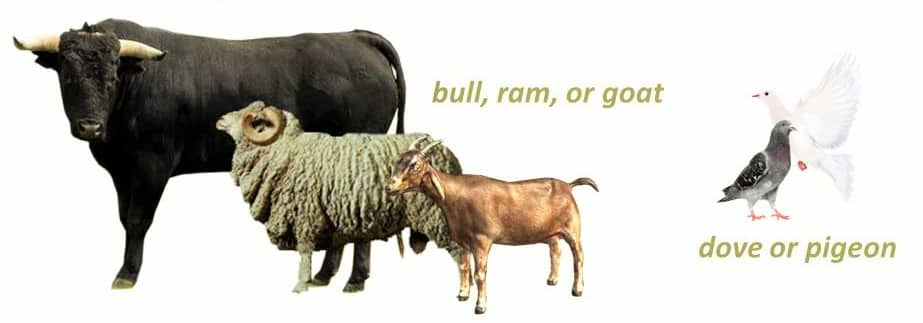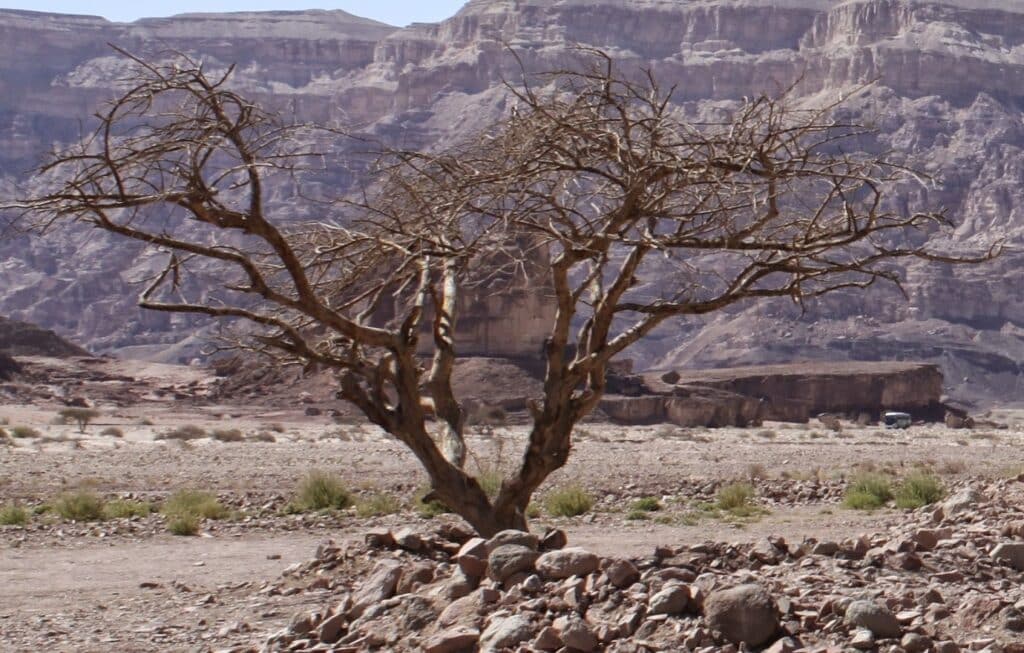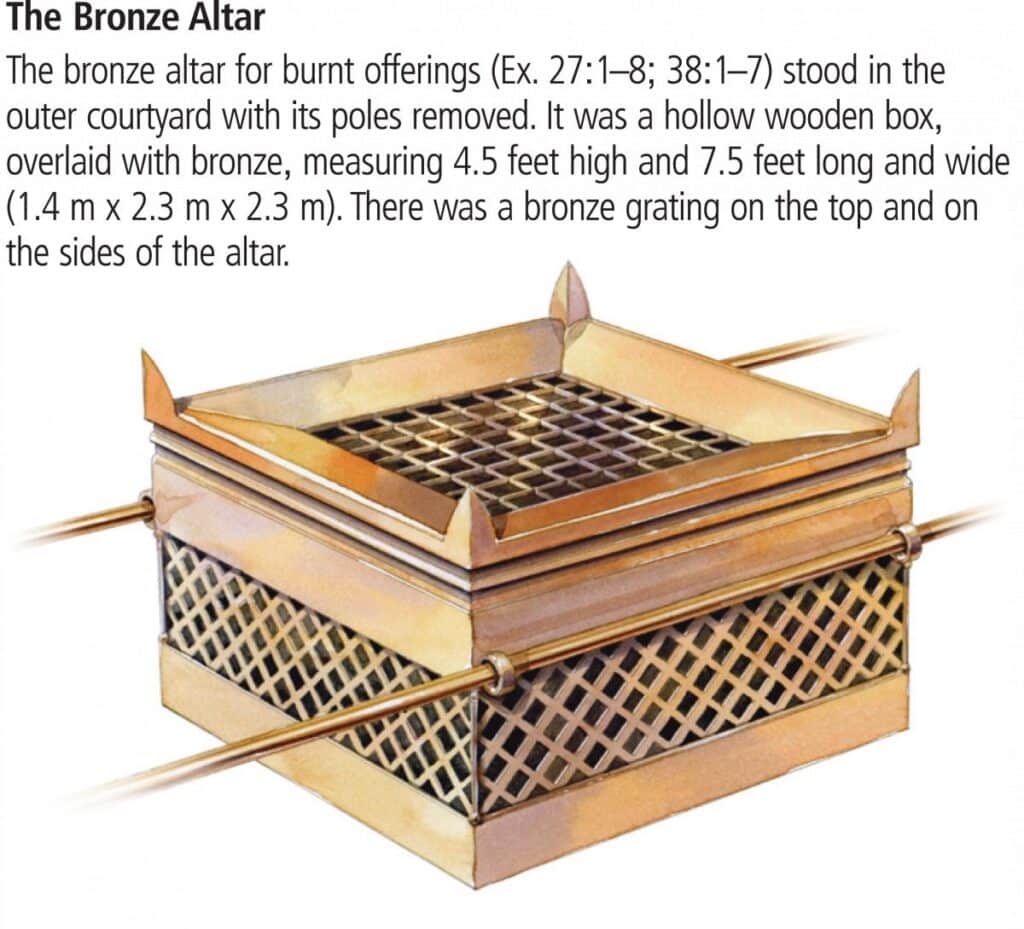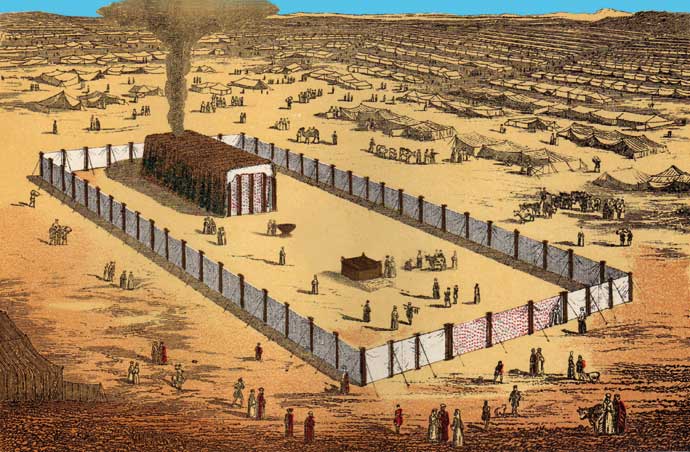Perhaps you have noticed that these lessons are approaching the tabernacle in the reverse order that’s found in the Bible. We started from the outside looking in. In Exodus 25, the Lord starts with a relatively small box in the inner sanctuary called the ark of the covenant and works outward – His approach to us. With the cross behind us and with the veil torn apart (Matthew 27:51) that once separated the Holy Place from the Holiest of Holies, the focus now is on how we can approach the Lord – how we can come in.
As an Israelite approached the entrance and looked inside, there was one large dominant structure filling the view – the brazen (bronze) altar. It was impossible to miss it. And yes, it was so large it blocked one’s entrance to the Holy Place. Perhaps not literally – but you get the sense!

“Using acacia wood, construct a square altar 7½ feet wide, 7½ feet long, and 4½ feet high. Make horns for each of its four corners so that the horns and altar are all one piece. Overlay the altar with bronze. Make ash buckets, shovels, basins, meat forks, and firepans, all of bronze. Make a bronze grating for it, and attach four bronze rings at its four corners. Exodus 27:1-4 NLT
In this section of your Bible, you will come across frequent mention of altars. The original word in Hebrew is linked to the slaughter of animals – usually for sacrifice.

Yes, God’s desire is to enjoy a relationship with us. His desire for the Israelites was that He, the Holy God, would dwell among sinful people, but how could that be possible? It could only be possible when sinful people came with a sacrifice for their own sins to the altar. Without a sacrifice, they could not approach God.
This brazen altar was 7½ feet wide by 7½ feet long and 4½ feet high – the largest single piece of furniture in the tabernacle. True, there’s some speculation over the size of the lampstand but the truth is, we are not given its dimensions. Some have done the math and determined that every other piece of tabernacle furniture could have been packed neatly inside the brazen altar. That’s how big it was.
For very practical reasons, this altar had to be large. Remember, the animal sacrifices ranged in size from birds to bulls. (Leviticus 1-6) Have you measured the torso of a bull lately?

But the ‘largeness’ of the brazen altar may also teach some spiritual truths as well:
- The size and the location of the altar would impress on everyone it’s absolute necessity in their approach to God. There’s no approach to God without the sacrifice. That’s where it starts. Check out Leviticus 17:11 in the Old Testament and Hebrews 9:25-26 in the New.
- The size may also suggest the largeness of the work that was to be done upon the altar. 1John 2:2 ESV “He (Jesus) is the propitiation for our sins, and not for ours only, but also for the sins of the whole world.” Also, think about Hebrews 10:12 12 ESV “… when Christ had offered for all time a single sacrifice for sins, He sat down at the right hand of God….”

It was a large wooden box made out of acacia wood. You may want to further study this acacia wood and how it beautifully portrays the humanity of Christ, who came from “a root out of a dry ground” (Isaiah 53:2) and was absolutely sinless in His character as a Man. (Hebrews 4:17; 7:26) Any part of the tabernacle that required wood used the wood from the acacia tree. (How many things in the tabernacle structure and layout required wood?) The indestructibility and durability of this type of wood “speak of Christ in His humanity, which withstood the fire of crucifixion (John 10:18) and the decaying effect of the grave (Acts 2:31) and His body, which was victoriously resurrected. (Matthew 28:5-6).” (1) Christ’s incorruptible Humanity and perfect Manhood, which was not subject to death but yet capable of dying, is typified in the acacia wood (Hebrews 2:14-15, 17; John 1:14). (2)
The wooden box structure was covered not with gold or silver but with copper/bronze. Bronze has a melting point of 950°Celsius or 1742° Fahrenheit. It was on this altar where the fires of sacrifice were to burn continually. The bronze could withstand the intense heat from the fire.

You may want to link the character of God – the consuming fire (Deuteronomy 4:24) and Bible incidents where God’s wrath, judgment, holiness, and power were displayed by fire. And now, before you leave this thought – think of the fires of God’s judgment that fell upon the ‘cross Sacrifice’ at Calvary. Had the Altar of Sacrifice only been made of acacia wood, it could not have endured the flames. Had the Lord Jesus been a mere man, He could not have endured the totality of Divine judgment.
The Bronze altar was also referred to as ‘most holy’ in Exodus 40:10 and the Altar of Burnt Offering in Exodus 40:29. We aren’t quite finished of this quick look at the bronze altar. We haven’t discussed the bronze mesh grate in the altar or the four horns or its bloodiness. So we will learn some more about it in the next lesson.
In closing, if someone asked you: “When you read about the brazen or bronze altar, why do you think of Christ” – what would you tell them?
Sources:
(1) David M. Levy, The Tabernacle – Shadows of the Messiah, p.22
(2) http://www.truthandtidings.com/issues/2004/t20040210.php
Dr. A. J. Higgins, Monday Meditations
The Tabernacle, Symbolism in the Tabernacle, Rose Publishing


Think of the fires of God’s judgment that fell upon the ‘cross Sacrifice’ at Calvary. John 3:14 ‘And as Moses lifted up the (bronze) serpent in the wilderness, even so must the Son of man be lifted up.’